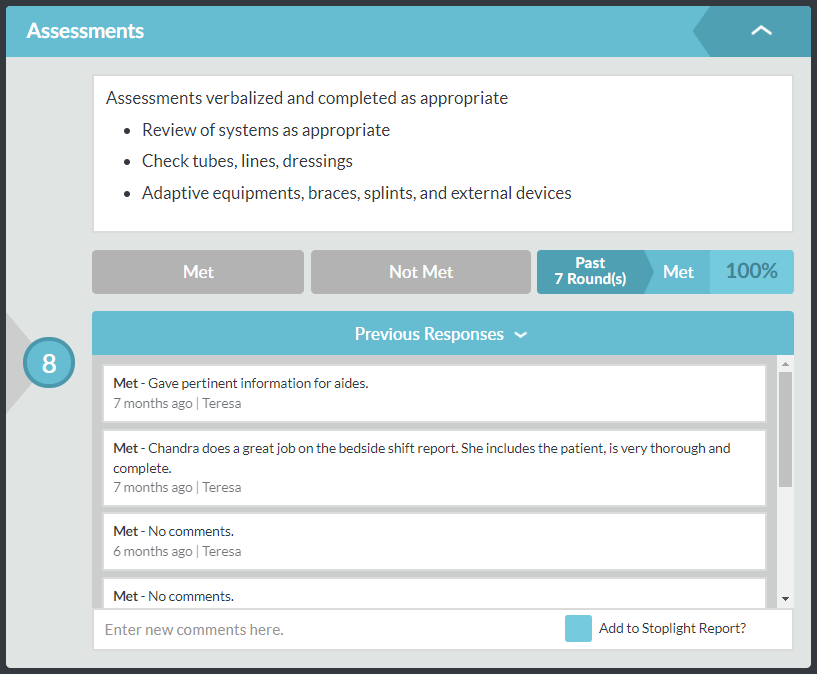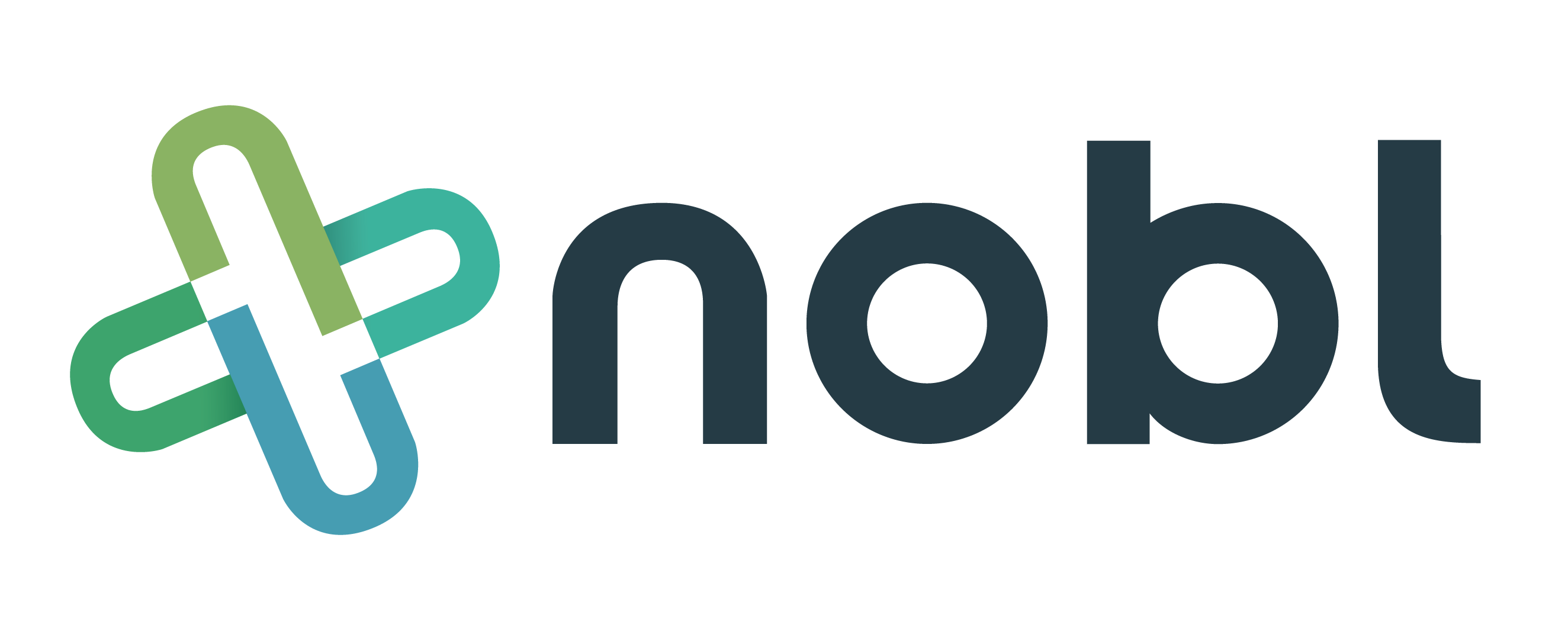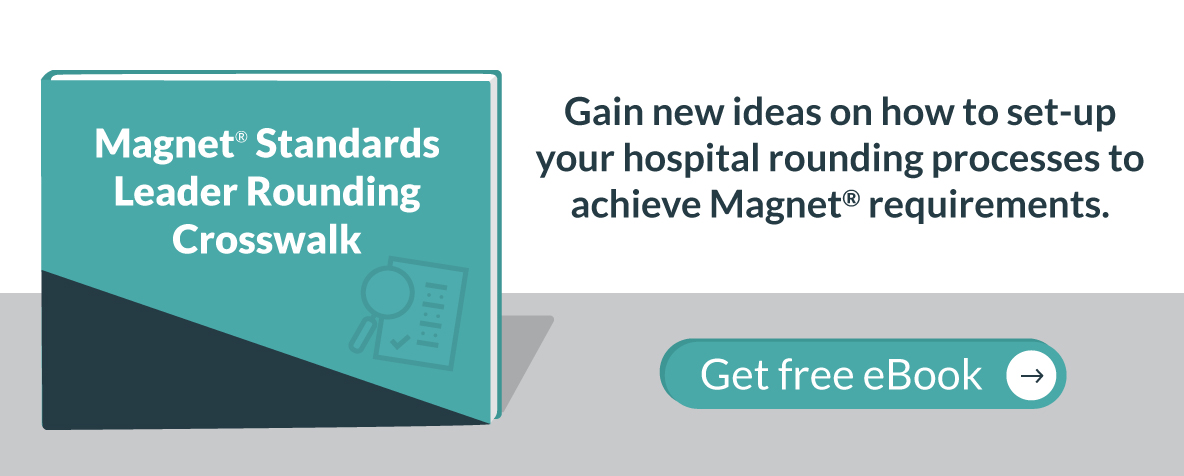
3 min read
Setting up a digital bedside shift report audit
Nobl Health May 2, 2019 7:35:00 AM
Bedside shift report is an evidence-based practice designed to enhance communication with patients by including them in the handoff process from one care provider to another. Failures of communication during these transitions may result in patient harm, negative patient experiences and loss of trust in providers and/or the facility.
One of our clients, who serves long term care patients through five different facilities, knew from experience that practice changes can be difficult and short-lived if emphasis on appropriate use of standard processes is not enforced consistently from the onset of the project. They used the Nobl Rounding Platform to launch and audit bedside shift report at their award-winning facilities.
Let's take a closer look at how this organization implemented the Nobl Rounding Platform to audit and track the bedside shift report process.
Phase 1: Setting clear expectations
The organization expects that nurse-to-nurse report at the end of every shift will take place at the bedside and include the patient/family when appropriate. These expectations were communicated to staff during new employee orientation, demonstrated by the preceptor, and discussed during unit staff meetings.
Phase 2: Validation of bedside shift report competence
Putting staff through a training process and recording attendance is different from assuring competence with the content presented. The organization designed an observation checklist that was used during two distinct shift-to-shift handoffs for each staff member to assure that each element of the process was correctly addressed. These elements of a quality bedside shift report included:
-
Wash hands upon entrance
-
Gather equipment, identify patient, engage patient/family
-
Check that fall risk prevention interventions are in place and active, assure call light matches risk level
-
Provide patient background, completed and verbalized assessments
-
Review of systems, check tubes, lines, dressings
-
Check adaptive equipment (braces, splints, external devices)
-
Update patient care board and note concerns
-
Communicate frequency of hourly rounding and ask about current needs
-
Wash hands upon exit and assure that all EMR tasks are addressed
Real-time data for each employee identified which staff members were ready to fully implement the process, which areas of the training were not being seen in practice, and when each unit was ready to set goals and be held accountable to those goals.
Phase 3: Using a digital tool to validate consistent use of bedside shift report
Once all staff were educated and their knowledge of the process was validated, the next step was to create a method to ensure that staff were following the process as designed. At this point, the leadership team was tapped to complete two bedside shift report validations per week, on randomly selected staff transitions. Unit-level nursing leaders validated that bedside shift report was happening, and directors validated that unit-level nursing leaders were doing those validations.
The Nobl Rounding Platform was built out to capture their weekly audit goal and reports were run against those weekly metrics. Weekly automated email reports were set up to share results so at-a-glance compliance for a specific unit was quick and easy to discover. Leaders used the platform to drill down on individual staff validations and provided that information back to the employee through real-time coaching. Those staff members that were consistently performing purposeful bedside shift reports were praised using the recognition feature in the Nobl Rounding Platform. Nobl interfaced with the organization's HR platform to automatically update staff lists and allowed transfer of the information to and from employee records. This saved nurse leaders time in the management of the bedside shift report audit process.
Below an example of how one component of the bedside shift report was tracked digitally.

Learning and moving forward with hardwiring bedside shift report
This organization learned that it was essential to leverage the digital rounding platform to audit the shift-to-shift report process not just in the beginning of implementation but as an ongoing audit weekly. Having the audit process occur on random days during both night shift and day shift was also an important aspect. Making direct care staff the drivers of the process and incorporating the patient care boards into the processes emerged as best practices. Having a digital tool gave them insights into steps of the process that were missed during bedside shift report, allowing them to make rapid changes to their process and training. Wins and opportunities were captured in real-time supporting the organization motto of “trust but verify.”
This blog was written by Dr.Teresa Anderson, Chief Nursing Officer of Nobl.
New Free eBook
Best Practices for Sharing and Reviewing Data from the Nobl Rounding Platform
Beryl Institute Case study
Improved First Impressions at Your Front Door - Patient Ambassador Rounders Enhance the Patient Experience of a Busy Emergency Department
Recent Posts

Five Key Factors to Consider in Pediatric Leadership Rounding



